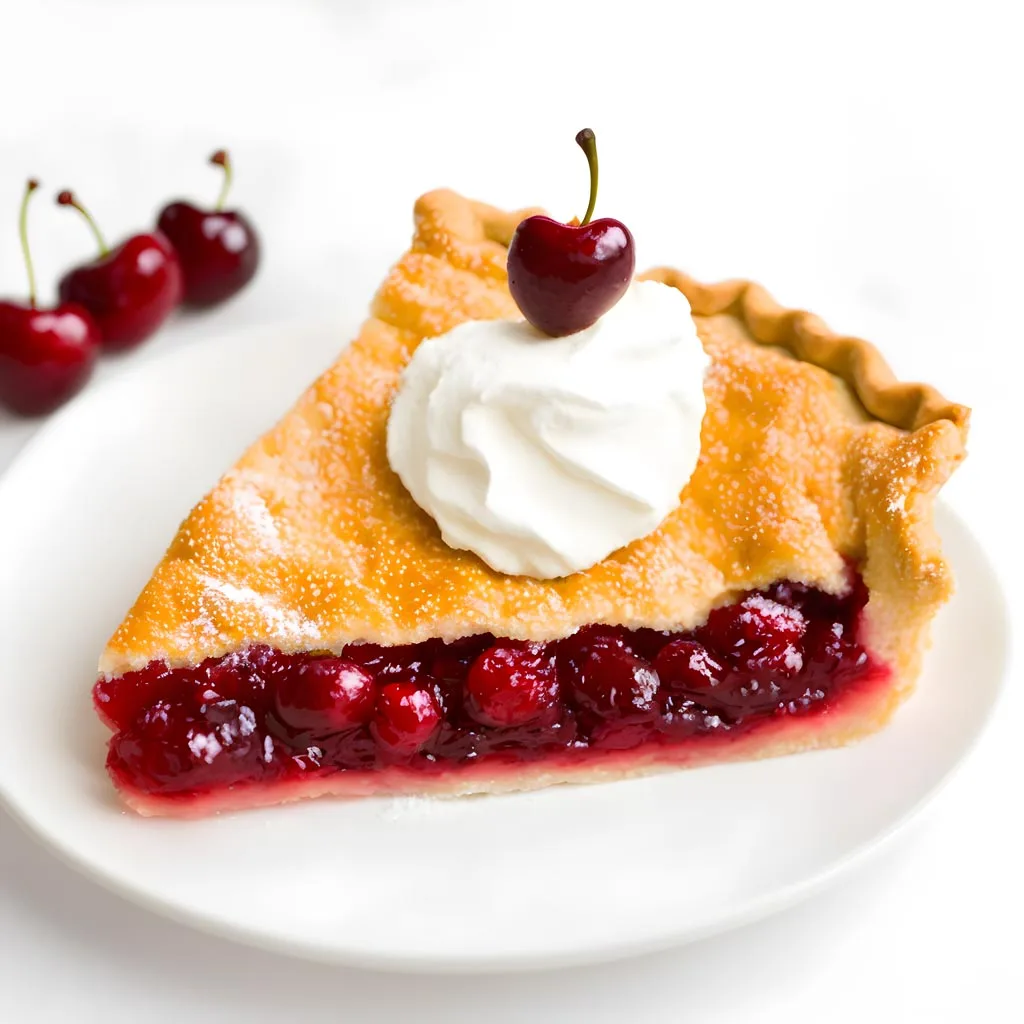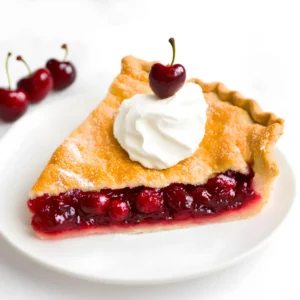
Cherry pie, with its luscious, fruity filling nestled within a golden, flaky crust, is a timeless dessert that evokes warmth and comfort.
Originating from the heart of American culinary tradition, this dessert has become a beloved classic enjoyed around the world. Despite its elegant appearance, making a cherry pie from scratch is simpler than you might think, making it an ideal treat for both beginner and experienced bakers alike.
Crafted from just a handful of ingredients, including fresh cherries, sugar, and a hint of cinnamon, this cherry pie recipe offers a delightful balance of sweetness and tartness. The combination of flavors, enhanced by a touch of vanilla extract and lemon juice, creates a symphony of taste that is sure to tantalize your taste buds.
While the process of making a cherry pie involves a few steps, they are straightforward and easy to follow, making this recipe suitable for those who are new to baking. From preparing the cherry filling to assembling and baking the pie, each step is designed to ensure that you achieve a perfect, homemade cherry pie every time.
So, whether you’re hosting a gathering with friends and family or simply craving a slice of nostalgia, indulge in the simple pleasure of homemade cherry pie. With its rustic charm and irresistible flavor, this dessert is sure to bring joy to any occasion. Get ready to savor the sweet taste of summer with every bite of this delicious cherry pie.
Expert Tip: To prevent the edges of the pie crust from over-browning, you can cover them with foil strips during the last 15 minutes of baking.
Cherries: Fresh cherries provide vibrant color and juicy sweetness to the pie filling.
Caster Sugar: Adds sweetness to balance the tartness of the cherries and helps create a thick, glossy filling.
Cornflour: Acts as a thickening agent for the cherry filling, ensuring it has the perfect consistency.
Lemon Juice: Enhances the flavor of the cherries and adds a bright, citrusy note to the filling.
Vanilla Extract: Infuses the filling with a subtle hint of warmth and depth of flavor.
Cinnamon: Adds a touch of warmth and spice to complement the sweetness of the cherries.
Shortcrust Pastry: Provides the base and top crust for the pie, creating a flaky, buttery vessel to encase the cherry filling.
Egg: Used to brush over the pastry before baking, giving the pie a beautiful golden finish.
Expert Tip: For a decorative touch, use cookie cutters to create shapes from the top layer of pastry before placing it over the filling.
Expert Tip: Be sure to thoroughly pit the cherries before using them in the pie to avoid any unwanted crunchiness.
How do I know when the cherry pie is done baking?
The cherry pie is done baking when the pastry is golden brown and the filling is bubbly. You can also insert a knife into the center of the pie to check if the cherries are tender.
Can I use frozen cherries instead of fresh ones?
Yes, you can use frozen cherries if fresh ones are not available. Just be sure to thaw and drain them before using in the recipe.
Can I make the cherry pie ahead of time?
Yes, you can prepare the cherry pie ahead of time and store it in the refrigerator before baking. Simply cover the assembled pie with plastic wrap and refrigerate until ready to bake.
How should I store leftover cherry pie?
Leftover cherry pie can be stored in an airtight container in the refrigerator for up to 3 days. You can also freeze slices of pie for longer storage, wrapping them tightly in plastic wrap and aluminum foil before freezing.
Can I use homemade pastry instead of ready-made?
Yes, you can use homemade pastry if you prefer. Just be sure to roll it out to the appropriate thickness and follow the same assembly and baking instructions.
Here are some more recipes for you to enjoy! If you my recipes don’t forget to rate and leave a comment.
If you have any recipe suggestions, please do not hesitate to ask me. A great way to stay in contact with me is through Instagram, Facebook, Twitter and YouTube. Don’t forget to tag me @CookwithNabeela in your recipe photos!

Subscribe now to receive my latest recipes directly in your inbox. Stay up-to-date and never miss out!

I love to cook! I want to share with you my favourite, delicious family-friendly recipes. I want to inspire you to create fantastic food for your family every day.
Add your first comment to this post